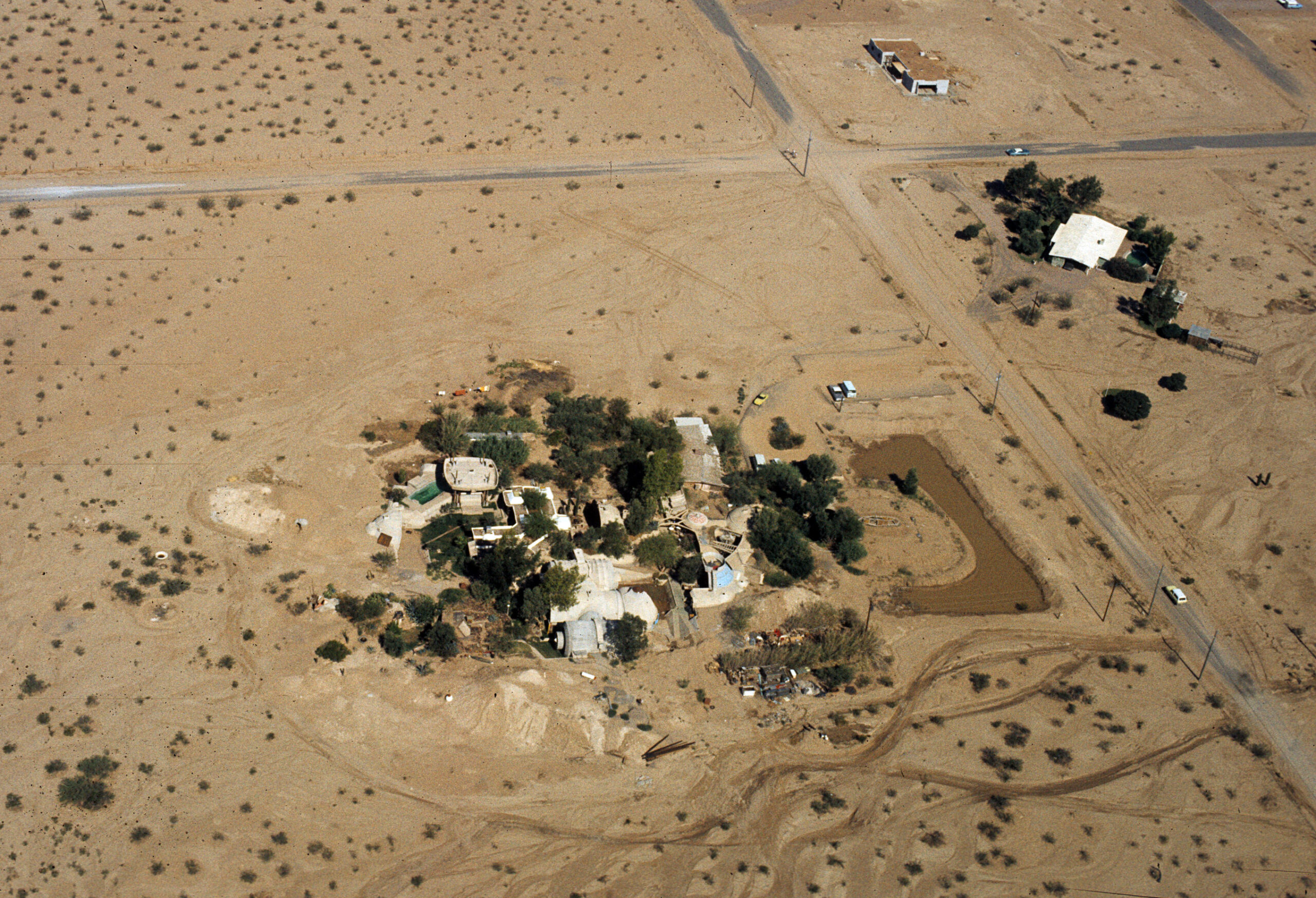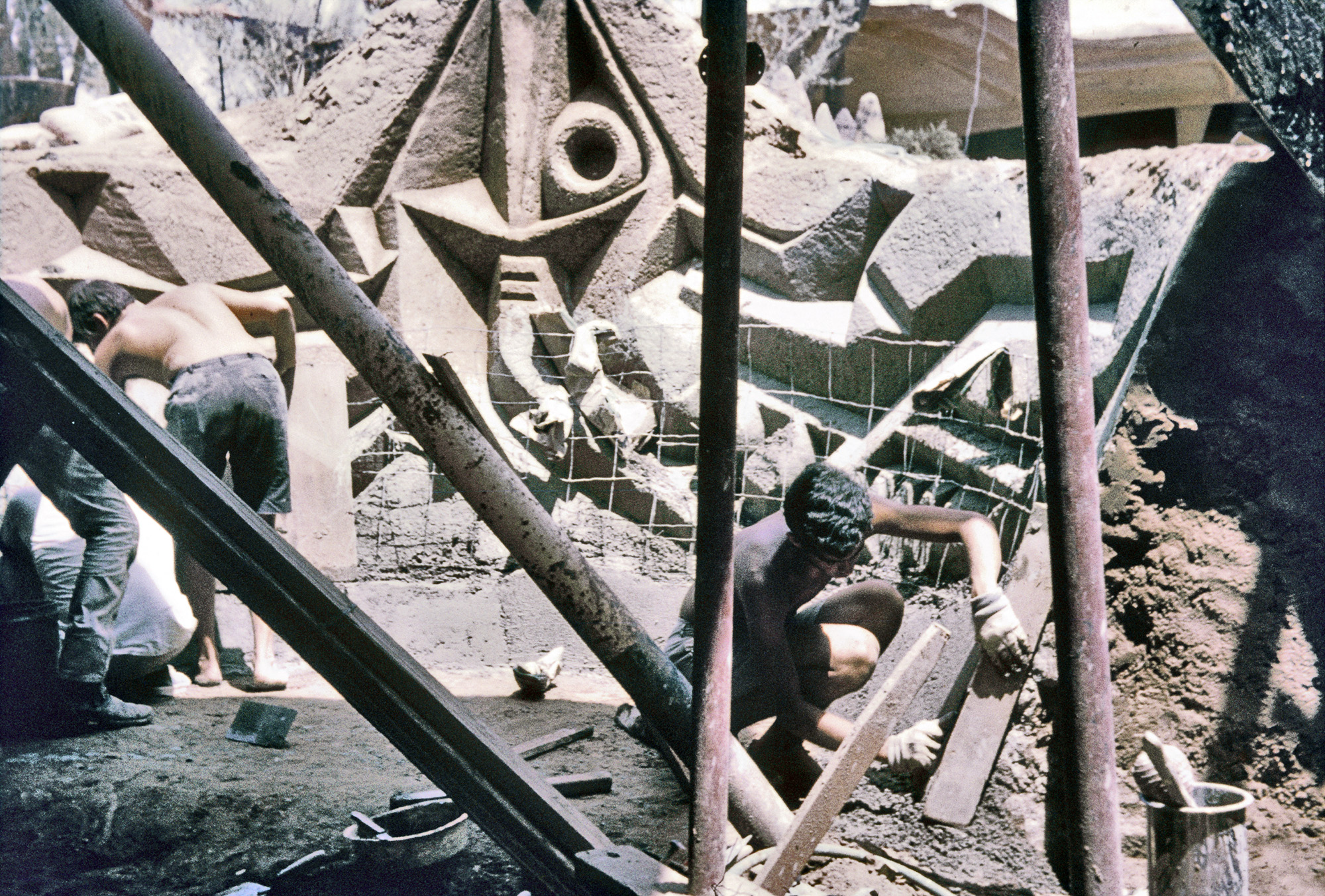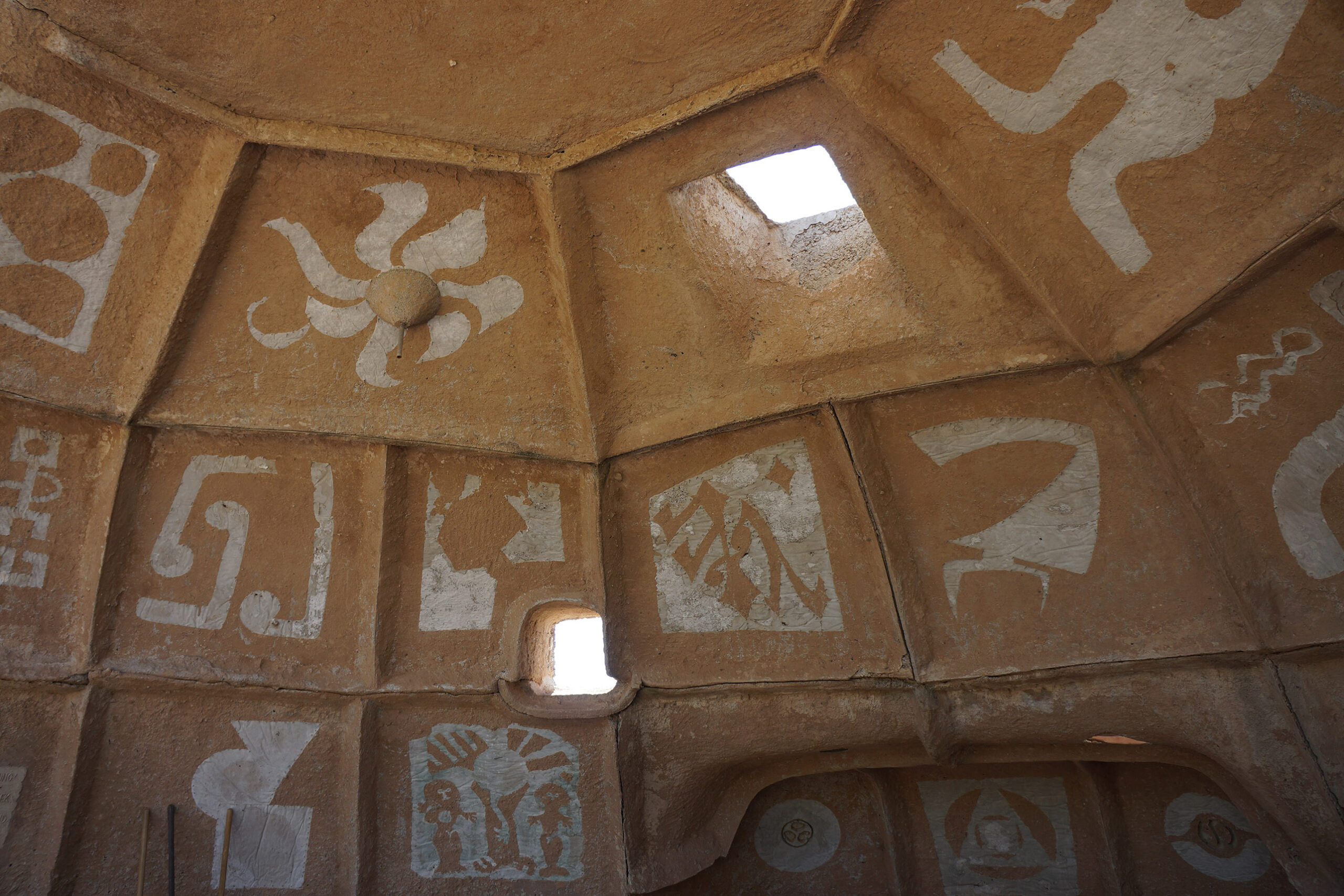Be part of the conversation: azarchitecture/Jarson & Jarson Architecture blog covers architecture and civic topics that comment on what’s happening in the Valley’s diverse design community. Here’s what’s happening now:

Our Visual Wealth: Opportunity & Responsibility for Cosanti – Part 3
“What makes Cosanti so special to me is the marriage between the earth and structure, the buff color from the silt integral in the concrete, for instance,” Scott Jarson says. “The decorative work is also so beautiful, an homage to indigenous people who carved petroglyphs,” he adds, noting that Soleri also learned from Wright, early Roman builders, even Chinese designers.
Designated a culturally significant site on the Arizona State Registry of Historic Places, Cosanti is also where Paolo Soleri perfected his “earth-casting” technique for building structures and procedures for casting bells, where he created his great bridge designs and where he wrote Arcology: The City in the Image of Man, which inspired him to build Arcosanti.
From the mid-1950s through the mid-1970s, Soleri and a cadre of apprentices and volunteers students designed and built Cosanti. Those dozen or so visionary dwellings and structures, including the Earth House (1956), Pumpkin Apse/Barrel Vaults (1967), Soleri Studio (1959), CatCast Home (1965), Gallery (1961) and canopied Pool (1966), represent Soleri’s pioneering vision to create a habitat balancing human needs and the environment.
With the name Cosanti, Soleri blended two Italian words, “cosa” and “anti” (“before things”), to describe his belief that humanity’s direct access to nature should also connect organically with its structures. The concept is aligned with his arcology, a portmanteau of architecture and ecology: “environment in harmony with man and nature.”
Surrounded by pricey El Maro Estates in Paradise Valley, one of the country’s wealthiest zip-codes, the Cosanti land is worth about $1.5 million an acre and continually increases in value, Jarson says, adding that this doesn’t necessarily jeopardize the future of Cosanti but remains a factor when discussing the preservation of a state treasure.
Also, the Taliesin School of Architecture and Cosanti Foundation hope to generate more attention to Cosanti through opening the venue for more tours, already expanded to weekends, explains Patrick McWhortor, former president and CEO of the Cosanti Foundation, who says the board is also considering pursuing a National Register of Historic Places designation for Cosanti.
The site should be reimagined as a uniquely public place in a town of superlative private places. “Cosanti and its history should serve as a point of pride for Paradise Valley,” Victor Sidy, former head of school and dean of the Frank Lloyd Wright School of Architecture, and managing principal of Victor Sidy Architect in Phoenix explains. “It’s a remarkable record of ingenuity.”
Cosanti should be celebrated as a place where environmental responsibility, especially in the water-poor Southwest desert, was pioneered. “We have to remind ourselves that we are fooling ourselves if we think that we are preserving the desert the way we are going on,” Soleri said in the 1999 interview. “We are not preserving the desert, we are not preserving us, we are really destroying ourselves. In order to change that trend, we have to change our minds.”
Will Bruder, FAIA, the celebrated Valley architect who apprenticed with Soleri in the 1960s sees Cosanti architecturally aligned with Antonio Gaudi’s late nineteenth-century masterworks in Barcelona, Spain and Simon Rodia’s early-20th-century sculpted towers in Watts, California. “Cosanti has been, since its inception, a pilgrimage site of both architects, sculptors and artisans from around the world,” he explains.
“It is extremely important that these fragile architectural inventions of genius find the resources and commitment of professional restoration and landmark status to protect their structural integrity from the failure of age and ensure continued access for the general public and scholars alike,” he adds.
The revenue from the sales of Cosanti Originals windbells, sized tiles, vessels, planters and pots provides revenue support for Cosanti. In addition, The Cosanti Foundation is funded by its members, individual donors and charitable foundations and, in non-COVID-19 times, through tours, hands-on workshops and performing arts events. But more funds will be needed to renovate and restore this important American place.
“This is where the highest level of thinking took place,” Jarson says. “Bucky Fuller lectured here, and Mark Mills, another Wright apprentice who went on to great things. Its intellectual legacy for all of us is the furtherance of ideals in architecture, creative construction and living.
“This is a fragile and delicate place, and we need to restore it so that a new generation can get a glimpse of how Cosanti was created,” he adds. “You won’t see anything like this anywhere in the world. It is inhabited sculpture and it is sacred.”
For more information, visit cosanti.com and arcosanti.org.
Brown is a Valley-based freelancer (azwriter.com). This is the fourth in an ongoing written series celebrating Arizona’s “Visual Wealth.” His article on the Cosanti, first appearing in the June/July 2021 issue of Defining Desert Living, is being released over three segments. The first and second were published here and here.
To read the Editor’s Note on Dr. Daniela Soleri, Paolo Soleri’s daughter, please use the link here




